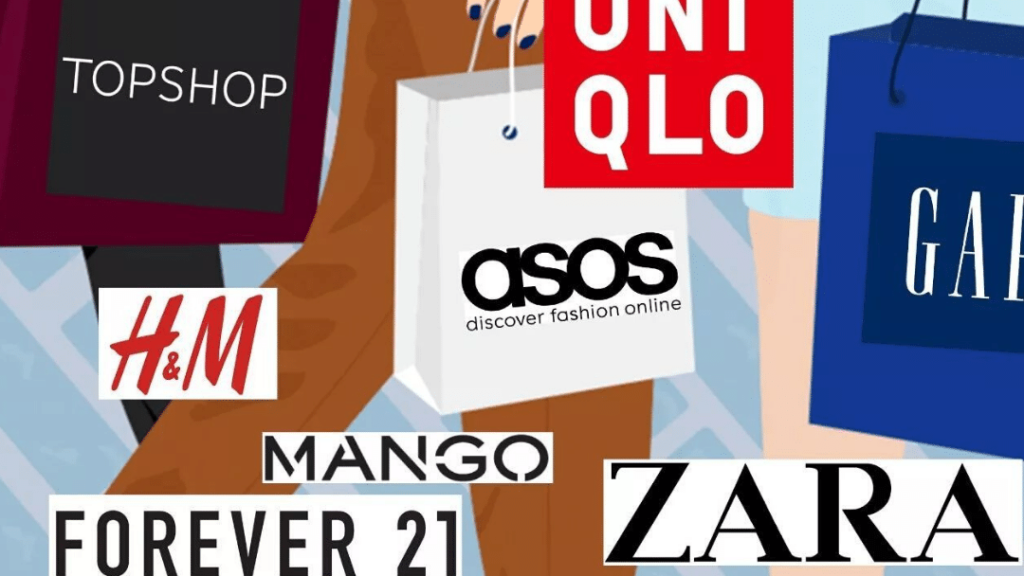Fast fashion has recently gained attention on social media as it has become almost inevitable in today’s society while promoting unsustainability. This practice has become increasingly popular among larger fashion corporations but has consequently harmed the planet, exploited workers, and caused deforestation. With that in mind, today, I wanted to talk about the immense influence fast fashion has had on social media and society as a whole.
What is Fast Fashion?
At what cost does one sacrifice the well-being of the environment over fashion? The answer can be found from fast fashion trends and retail practices. Fast fashion is cheap, trendy clothing that quickly gains popularity on social media platforms such as TikTok and Instagram. The main idea behind big corporations marketing fast fashion to the general public comes from creating pieces inspired by runway shows at a lower price to meet consumer demands. However, lower prices also mean lower quality and unsafe working conditions and poor wages for those who work in the manufacturing factories. One example of a fast fashion tragedy is the Rana Plaza incident that occurred in 2013 in Bangladesh, in which many workers were killed due to hazardous working conditions, which led to a building collapse.
Sustainability and Fashion Trends
As you may have probably already noticed, Y2K has become a prominent fashion trend all over social media and has led to more and more people adopting the early 2000s aesthetic. While this was happening on social media, corporations such as H&M got the opportunity to create cheap Y2K inspired clothing and market it to teens. At the same time, H&M also released a “green campaign” for which they claimed many of their products were environmentally sustainable. However, according to The Guardian, 40% of these claims could be misleading to consumers. Other fast fashion trends on social media come from stores such as GAP, Urban Outfitters, and Shein that create low prices for their clothing at the cost of cheap labor. Social media further endorses fast fashion by promoting “haul videos” from creators who unintentionally seem to support these trends that exploit factory workers. Fast fashion is difficult to escape as it is comfortable to conform to the trends influencers and celebrities are participating in. Thus, many of us resort to stores, such as the ones stated above, to get clothing pieces similar to the celebrities we admire at a cheaper cost. Therefore, it can be said that social media quite literally fuels fast fashion.
Other notable fast fashion trends:
- Crochet sets inspired by 70s and 80s
- Twilightcore (micro trend from TikTok)
- ZARA Hauls
- “Clean girl” aesthetic
Influence from the TV Shows and Movies
The entertainment industry has always had a prominent and long-lasting effect on the fashion industry and, more specifically, fast fashion. Television shows have the ability to assist with the creation and popularization of a variety of fast fashion trends. Additionally, content from Youtube influencers, TikTokers, and even mainstream celebrities has also heavily influenced how consumers respond to fast fashion trends. For instance, a couple of months ago, fashion seen in Euphoria blew up on social media platforms and garnered attention from people around the world. This led to a revival of vintage and Y2K fashion pieces such as the velvet tracksuits and rhinestones. Currently, people online have tried to recreate fashion seen from the latest Stranger Things season, which is definitely more retro than the other fast fashion trends. People resort to giving into these fast fashion trends as it gives them a way to resonate with the characters and eras they have admired on screen for so long. Additionally, some companies that contribute to the fast fashion crisis end up sponsoring the clothing in some movies or shows, which makes it easier for people to find and sell those pieces of clothing. Due to the short time frame of many fast fashion trends, a lot of the clothes that are impulsively bought end up in thrift stores or landfills. It is evident that these trends are not good for the environment as fast fashion products use cheap, toxic chemical dyes that pollute clean water sources. Also, polyester is a common product used in these fashion items, and it is a contributor to fossil fuels.
In the end, fast fashion has become a huge part of our society, and it is difficult to completely get rid of it. Thus, it is essential to do your research and consider more environmentally friendly options whenever possible.


